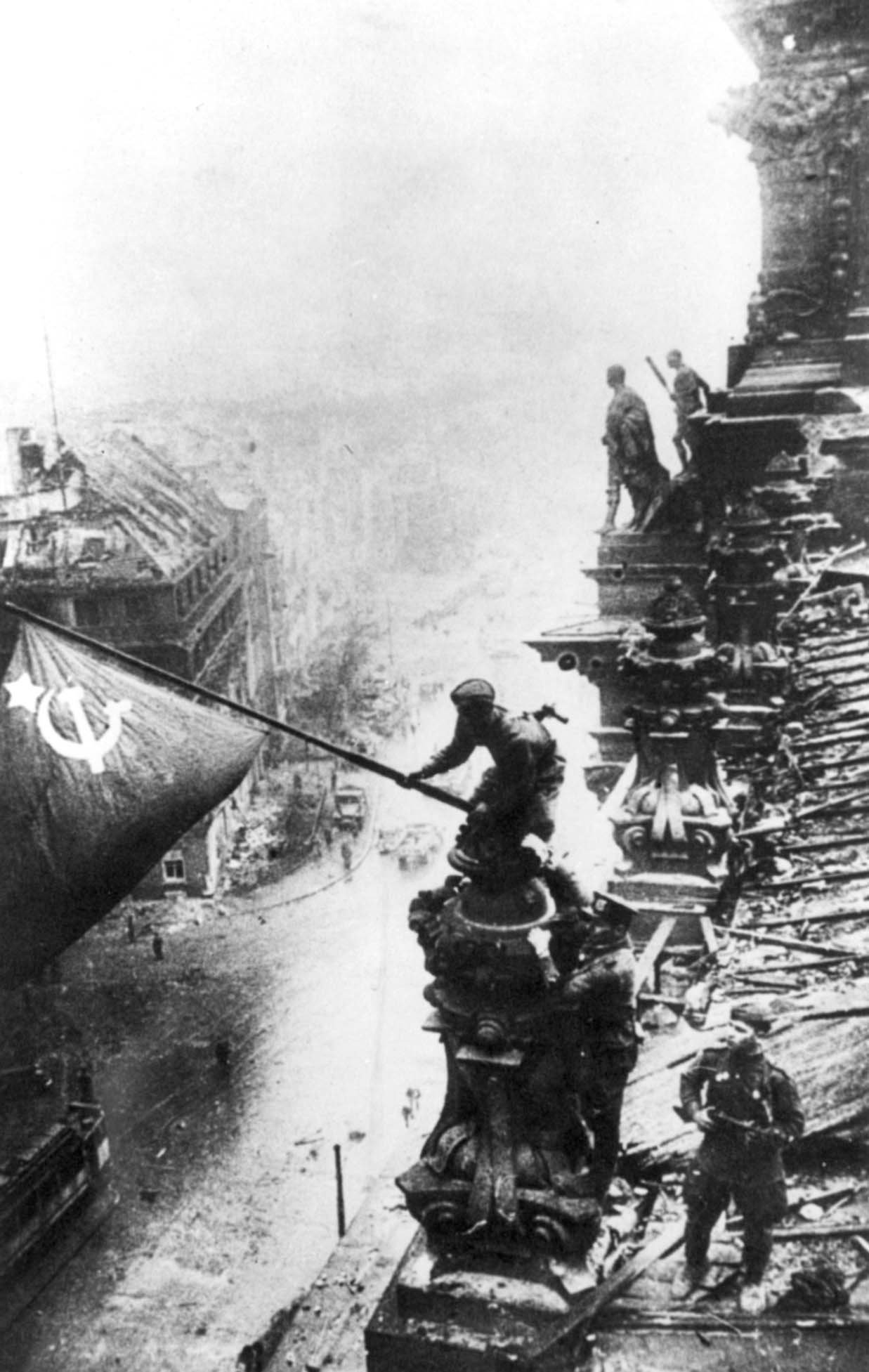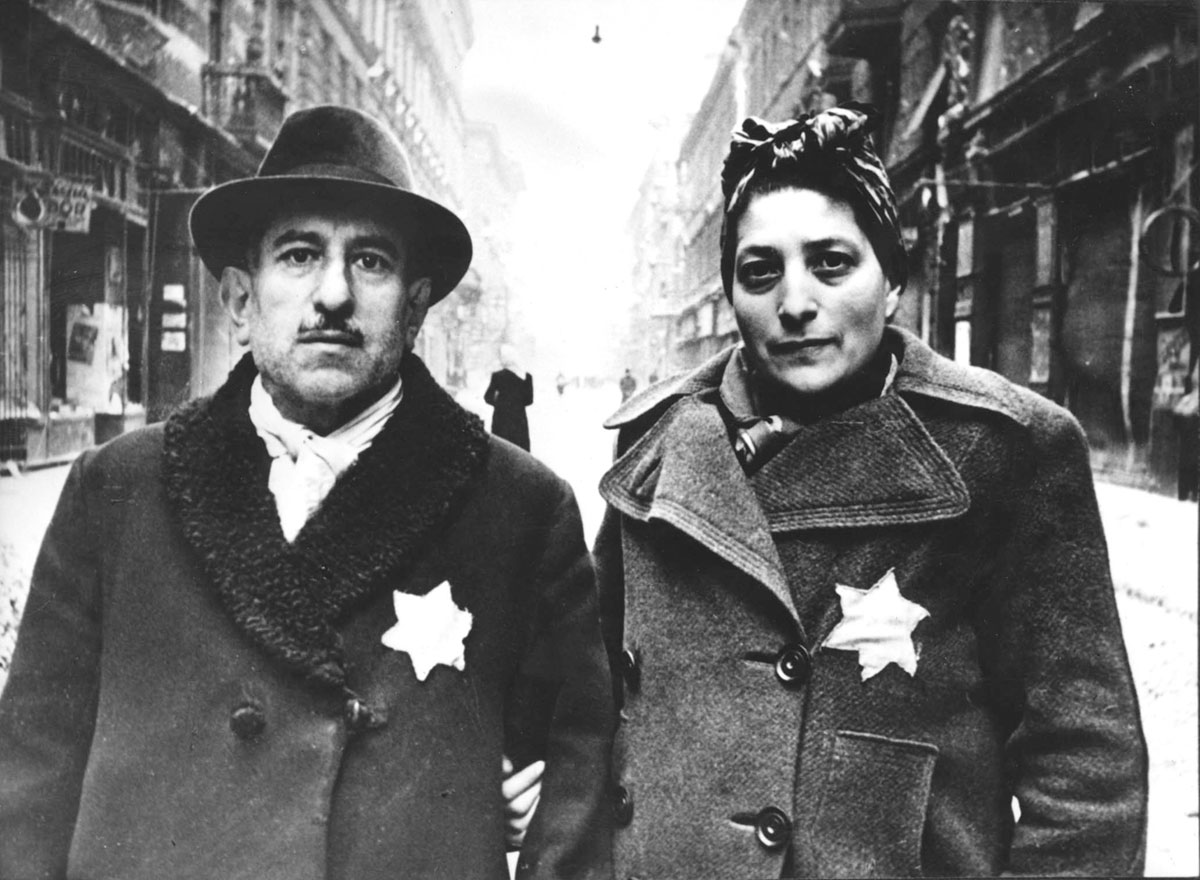Evgenii (Efim) Khaldei was born into a Jewish family in Iuzovka (later Stalino, and later still Donetsk) in 1917. In the following year, during the Russian civil war, Evgenii's mother and grandfather were murdered during a pogrom in the city. Little Evgenii was injured, but survived. Khaldei started working at age 13. After developing a passion for photography, he constructed his own first camera. Until 1935 he freelanced as a photographer for several local publications. 1936 was a landmark year for Khaldei: he joined Fotokhronika TASS, the largest photography telegraph service in the USSR, and moved to Moscow, where he studied to be a professional photographer.
He joined the Red Army in 1941 as a photojournalist for the TASS news agency and photographed the war from beginning to end, from Murmansk to Berlin. His work with the Black Sea Fleet in 1942 raised the 26-year old Khaldei to the top ranks of war photographers. Among his photographs were pictures of Nazi atrocities, including those against Jews. Several days after the temporary liberation of Kerch in the Crimea by the Red Army at the end of December 1941, along with some colleagues, Khaldei took photographs of the terrible traces of the mass murder of Jews at the Bagerovo murder site that became the earliest symbol of Nazi brutality in the USSR. Referring to this event, Khaldei wrote in his diary how, as a Jewish photojournalist, he collected stories about the mass murder of Kerch's Jews from family members of the dead and survivors. For Khaldei the events of the Holocaust became acutely personal when he visited his hometown of Stalino shortly after its liberation in September 1943. He found out that many of his family members, including his father and two sisters, had been killed outside the town by the Germans. In interviews given many years afterwards he claimed that this experience changed the way he saw his role: from then on he considered his camera a tool of revenge as well as of documentation.
Khaldei's most powerful photographs reflecting the Jewish aspect of the war are of the Budapest ghetto. In January 1945 he was accompanying the Red Army when it entered Budapest. There he visited the just liberated ghetto, one of the last ghettos in all of Europe, where he photographed Jews who had survived the Nazi occupation. In March 1945 some of Khaldei's ghetto photographs were published in the Soviet media. However, they did not appear in the central newspapers since they did not fit the guidelines of the Soviet government, which tended to minimize the significance of the Holocaust perpetrated by the Nazis in the USSR by referring to the victims as Soviet citizens rather than as Jews. In March 1945 these photographs, including the photograph "Jews with Yellow Stars" (which became famous in the West many years later as "A Jewish Couple"), appeared in Eynikayt, the Yiddish newspaper of the Jewish Antifascist Committee. There the people photographed by Khaldei in Budapest were referred to explicitly as Jews. In the video interview he gave in 1997 to Belgian television Khaldei noted that he had emphasized his own Jewishness during his encounter with the Jewish couple in Budapest.
His most famous photograph, his May 2, 1945 "Raising the Red Flag over the Reichstag," crowned his career as a military photographer. In the video interview mentioned above Khaldei discussed the fate this photograph:
"…by the time I arrived back in Moscow late at night on May 3… Palgunov, the editor-in-chief and head of the TASS press agency had [already] approved my photograph. When I entered his office, he showed me a small version of the photograph and asked me, 'What is this?' I replied: 'the [red] flag over the Reichstag.' He continued, 'Didn't you notice that this soldier [the one who was raising the flag] has watches on both his wrists - one on his right wrist and one on his left?' I said that I hadn't noticed this, that I had seen only the Red Flag … over the Reichstag in Berlin. He said, 'No. We can't [publish the photograph as it is], this is looting. A Soviet soldier can't be a looter! Remove it, scratch it [one of the watches] out on the negative.' I replied, 'Well, if I have to scratch it out, I will.' I had to obey him. I arrived at the photography editorial office, took a needle and scratched out … the watch that he [the soldier] had … on his left wrist…."
During the course of the war Khaldei was awarded many Soviet decorations, including the Order of the Red Star, and many medals. He ended the war with the rank of first lieutenant.
In 1945, when Khaldei was at the peak of his career, he was invited to photograph the Victory Parade in Moscow, the post-war Potsdam Conference, and the 1946 Nuremberg Trials.
During the anti-cosmopolitan campaign of the late 1940s and early 1950 many Jewish prominent doctors, cultural figures, intellectuals, journalists, and photographers were fired or even murdered for have been "too Jewish" during the war. Some of them were persecuted for their connection to the Jewish Anti-Fascist Committee, which was accused of being a center of Jewish-Zionist conspiracy. In 1948, along with several other Jewish photographers, Khaldei was fired from the TASS news agency. He attributed this to antisemitism. After Stalin's death he was rehired by Pravda and remained an important photographer for the rest of his career. Shortly before his death the Jewish Museums in New York and San Francisco had solo exhibitions of his photographs.
Khaldei died in Moscow in 1997. In 2005 The State Historical Museum of Moscow exhibited a wide range of Khaldei's Budapest photographs, including several of recent ghetto inmates, but did not mention the fact that Khaldei was Jewish. In 2008 a solo exhibition of his photographs was held at the Martin Gropius Exhibition Hall in Berlin.
Interview with Evgenii Khaldei
In a 1997 interview Evgenii Khaldei such described his 1945 meeting with the Jewish couple in Budapest:
"…Suddenly I saw a [Jewish] husband and wife walking along the street… with Stars [of David on their clothes]. I was stunned: the city had been liberated but they were still wearing those stars. I approached them. I was wearing a black leather coat and they became… frightened… taking me for an SS-man. I approached… and said to them … in a mixture of Yiddish and German, 'Wait' and I tore off the Star of David off the man and then off the woman. They again became frightened so I said to them.… 'Alles gut … ich bin auch a yid. Sholom aleichem' [everything is o.k. I am a Jew too. Peace to you]. When I said 'Sholom aleichem' the women burst into tears and fell on into arms. They told me how afraid they had been, how awful it was for them to constantly wear this Star of David.…"
From the video interview "Evgenii Khaldei: Photographer under Stalin" (Austria/Belgium) given by Evgenii Khaldei to Belgian television in 1997, copy Yad Vashem Film Archive 92732.








